Abstract
1. The relationship between the [Ca]o, the [Na]o and the strength of the contracture evoked when the [Na]o is reduced has been investigated in isolated frog atrial trabeculae.
2. The strength of the contracture varies by the [Ca]o2 and by 4√([Na]o) over the lower tension range.
3. The contracture induced by reduction of [Na]o is not sustained, but relaxes spontaneously. The rate of this relaxation is only dependent on the [Na]o is the presence of strophanthidin.
4. After the spontaneous relaxation of an Na-free contracture, the ability of the trabecula to develop tension upon a second challenge with Na-free solution returns in about 3 min if the muscle is perfused with Na-containing fluid. This recovery process is slowed if the [Na]o is low during the recovery period, but the recovery is hastened by electrical stimulation of the preparation or by perfusion with K-free or strophanthidin containing sodium-Ringer.
5. It is suggested that the influx of Ca2+ which induces the Na-free contracture depends on the presence of Na+ inside the cells. When the intracellular Na concentration falls, the Ca influx falls, and the muscle relaxes as a result of the activity of an intracellular relaxing structure.
Full text
PDF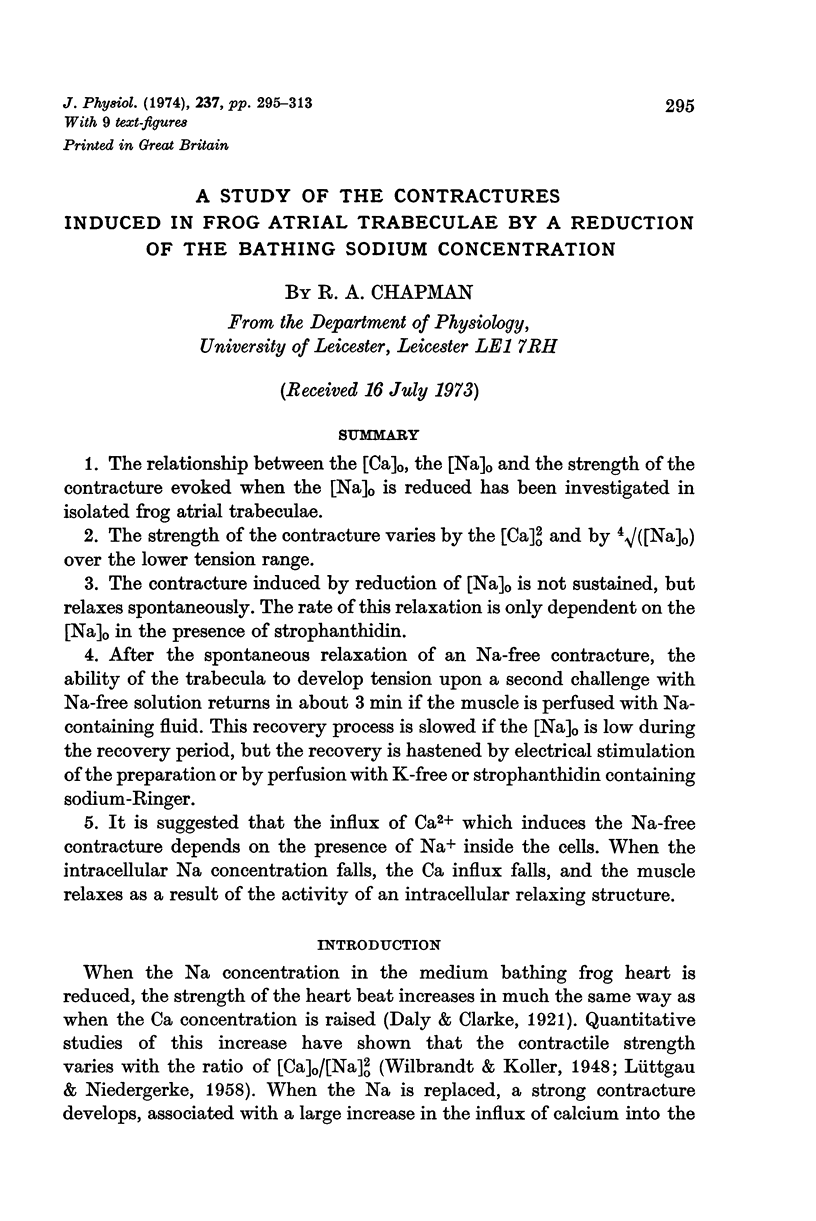
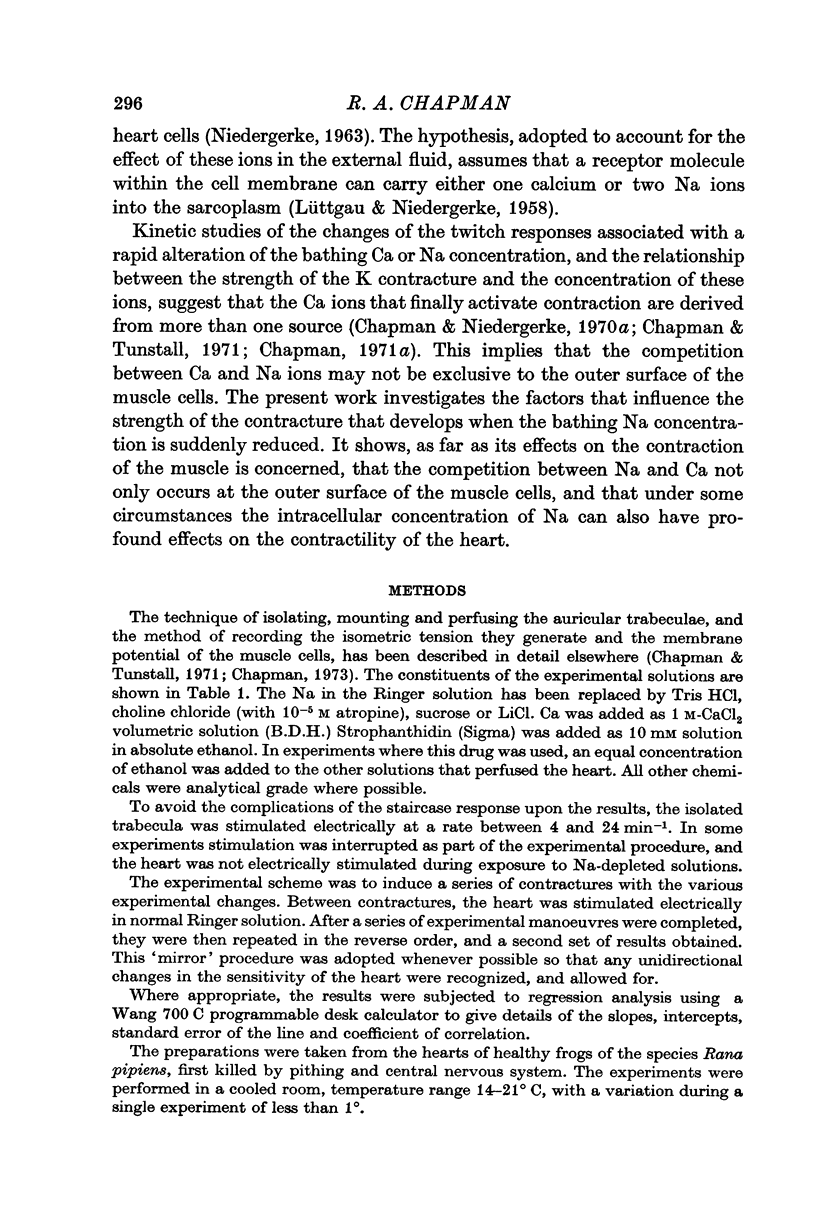
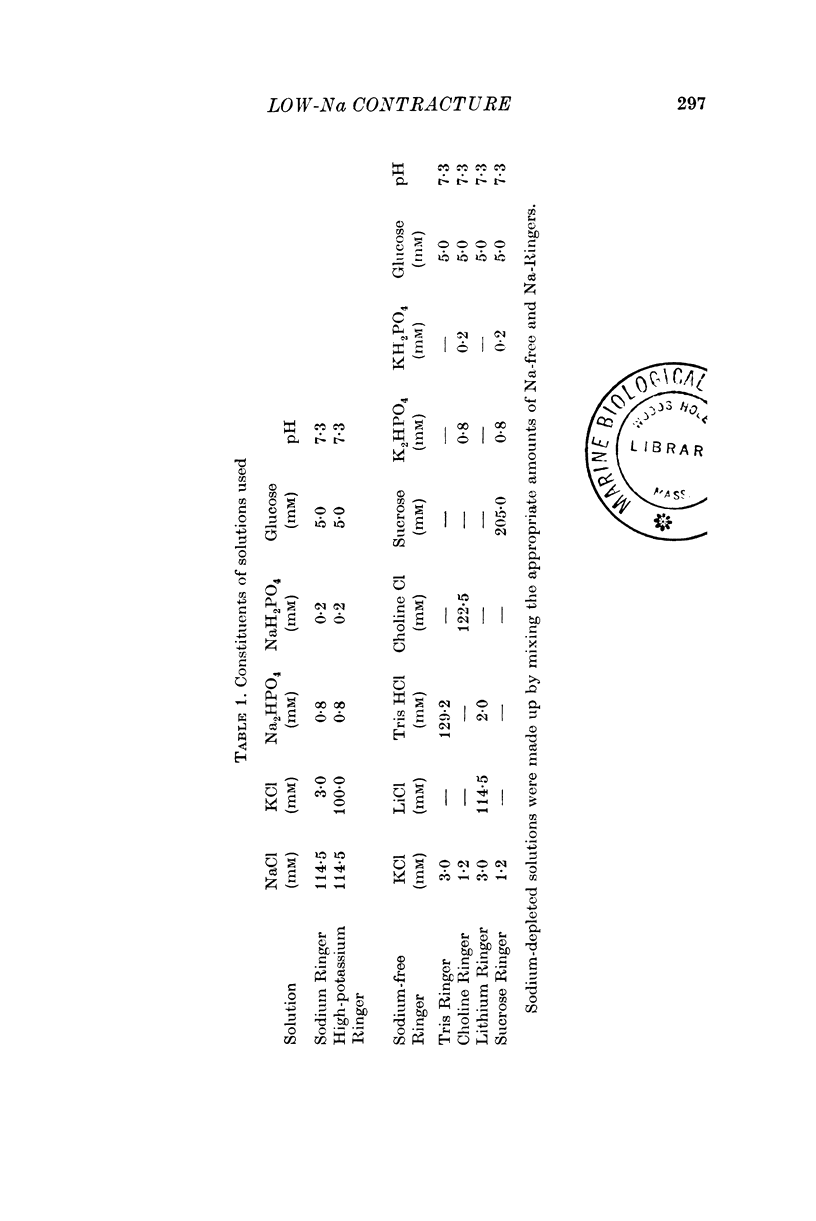
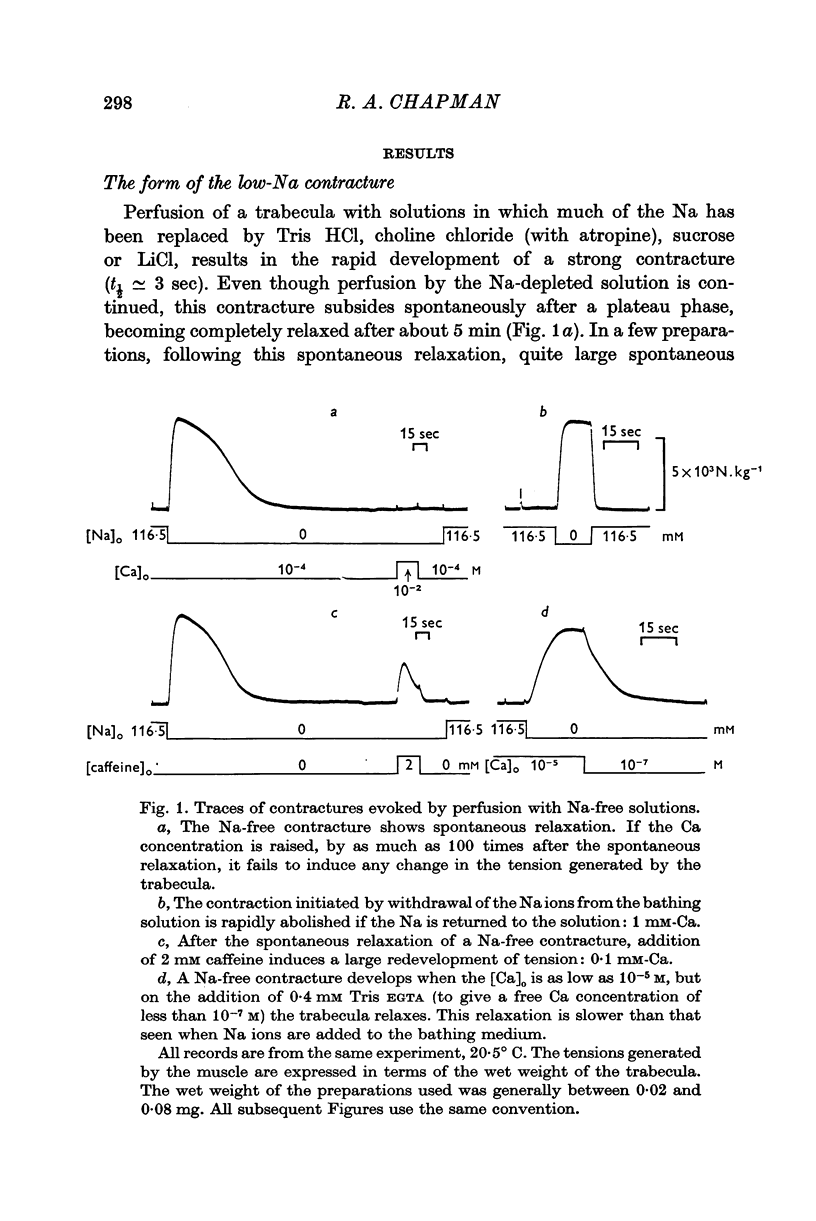
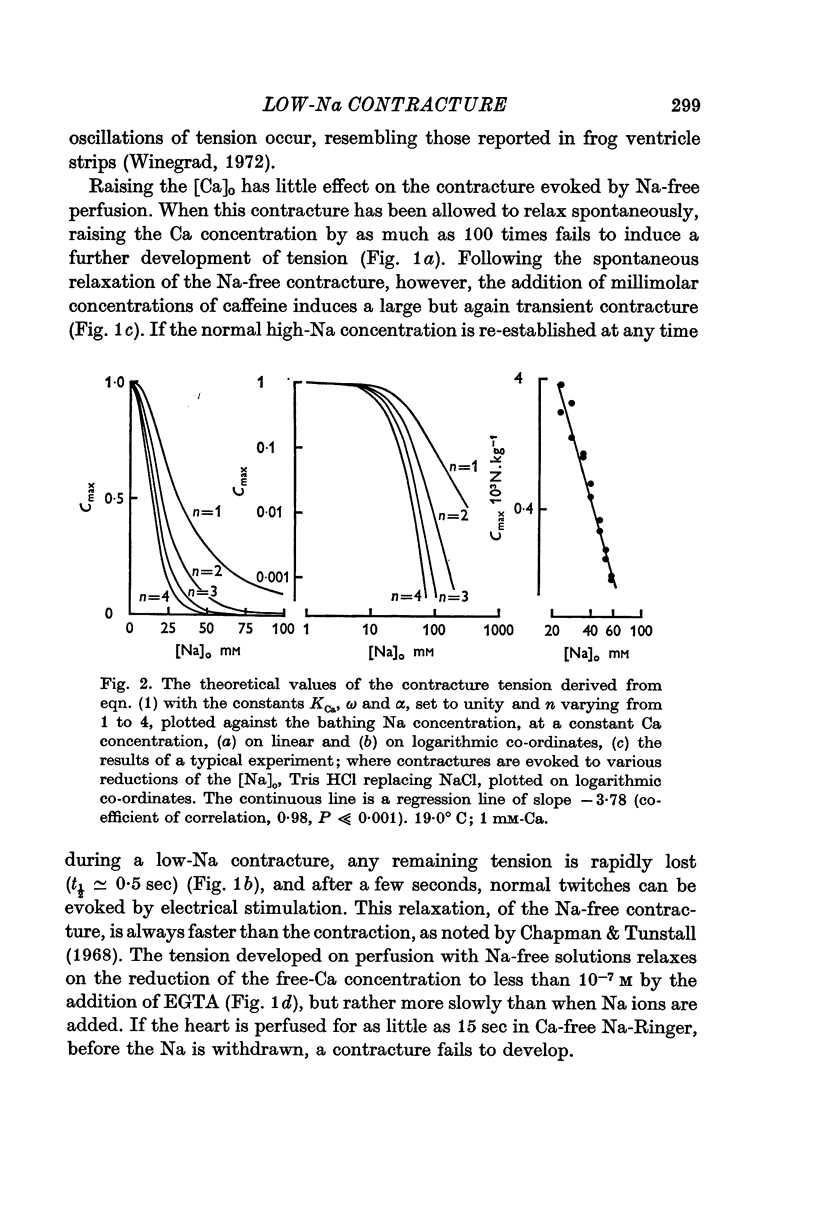
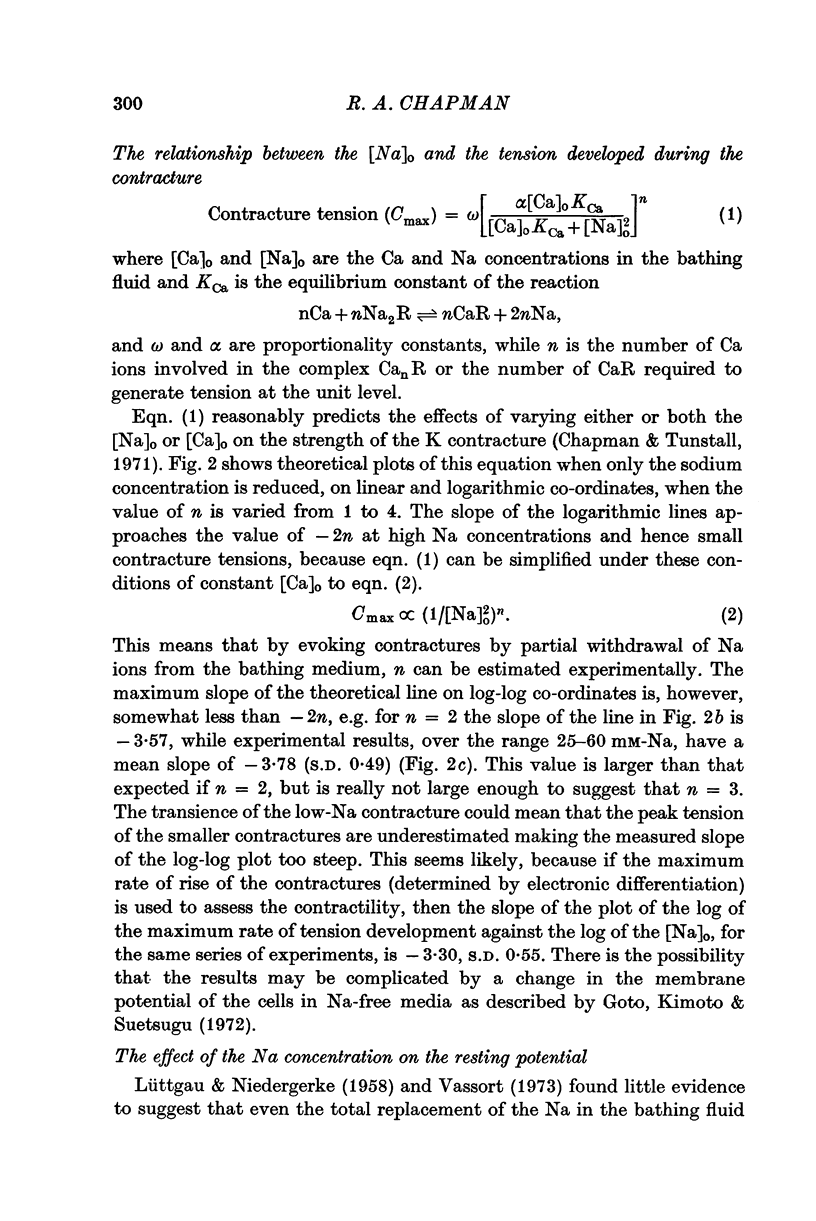
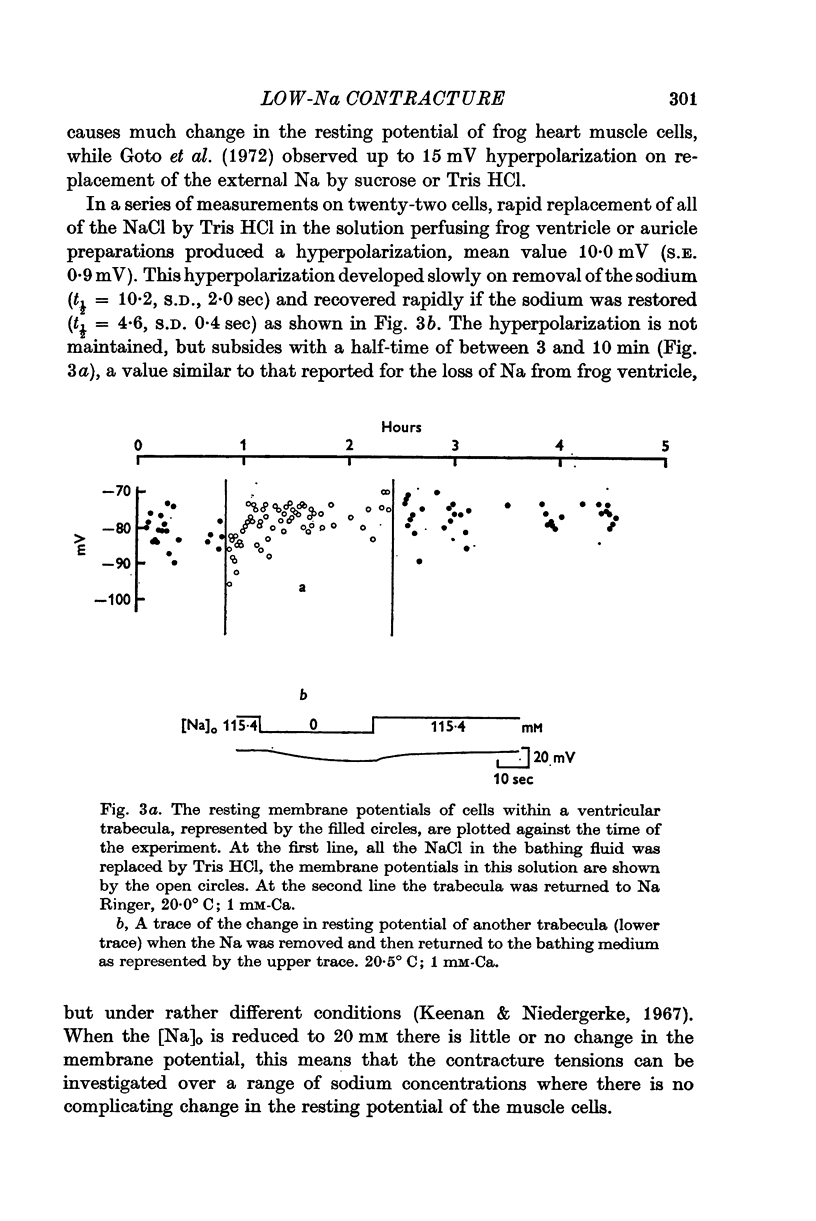
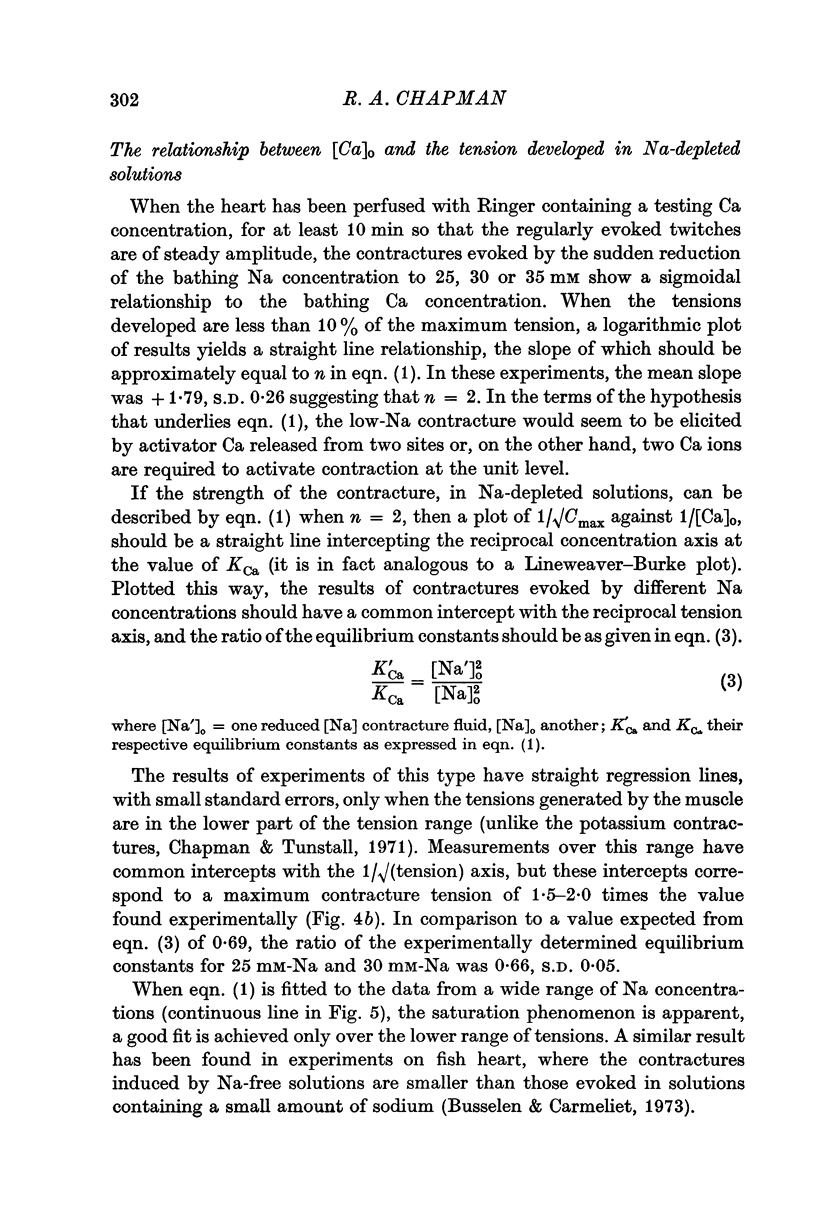
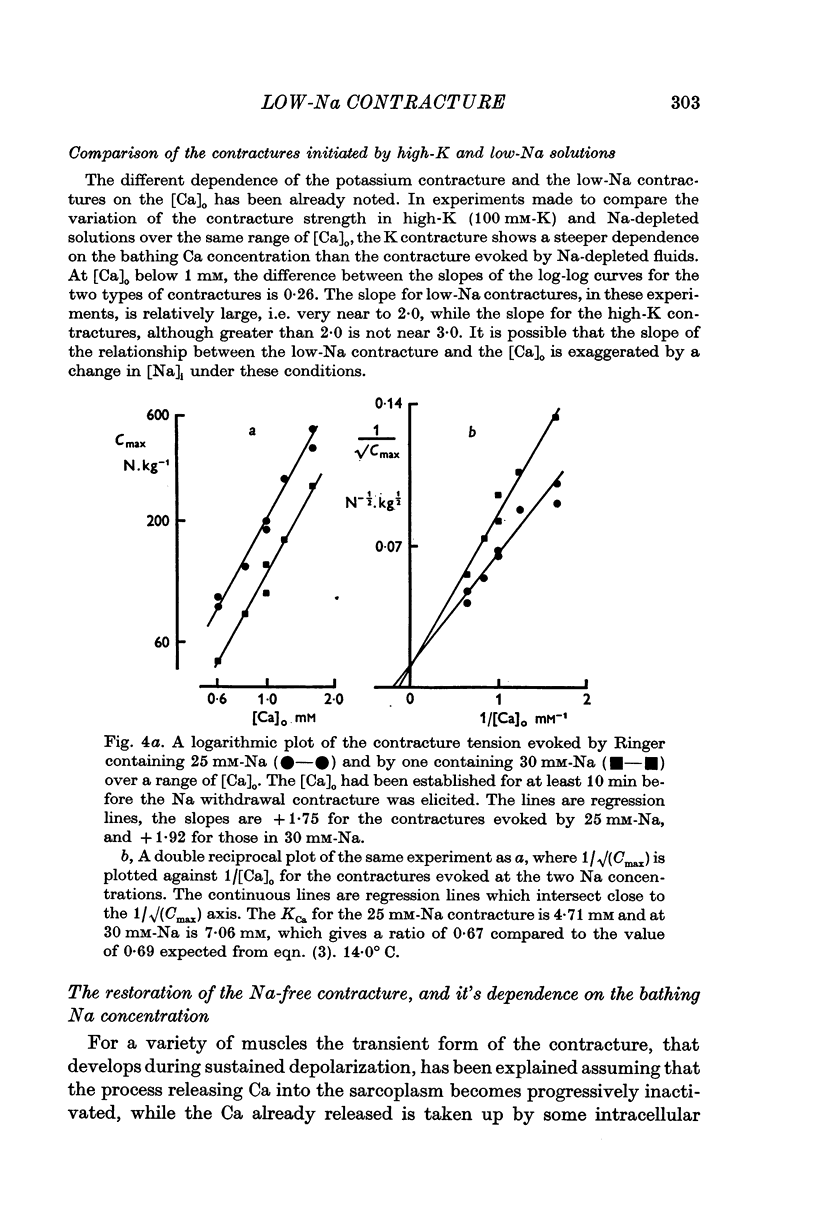
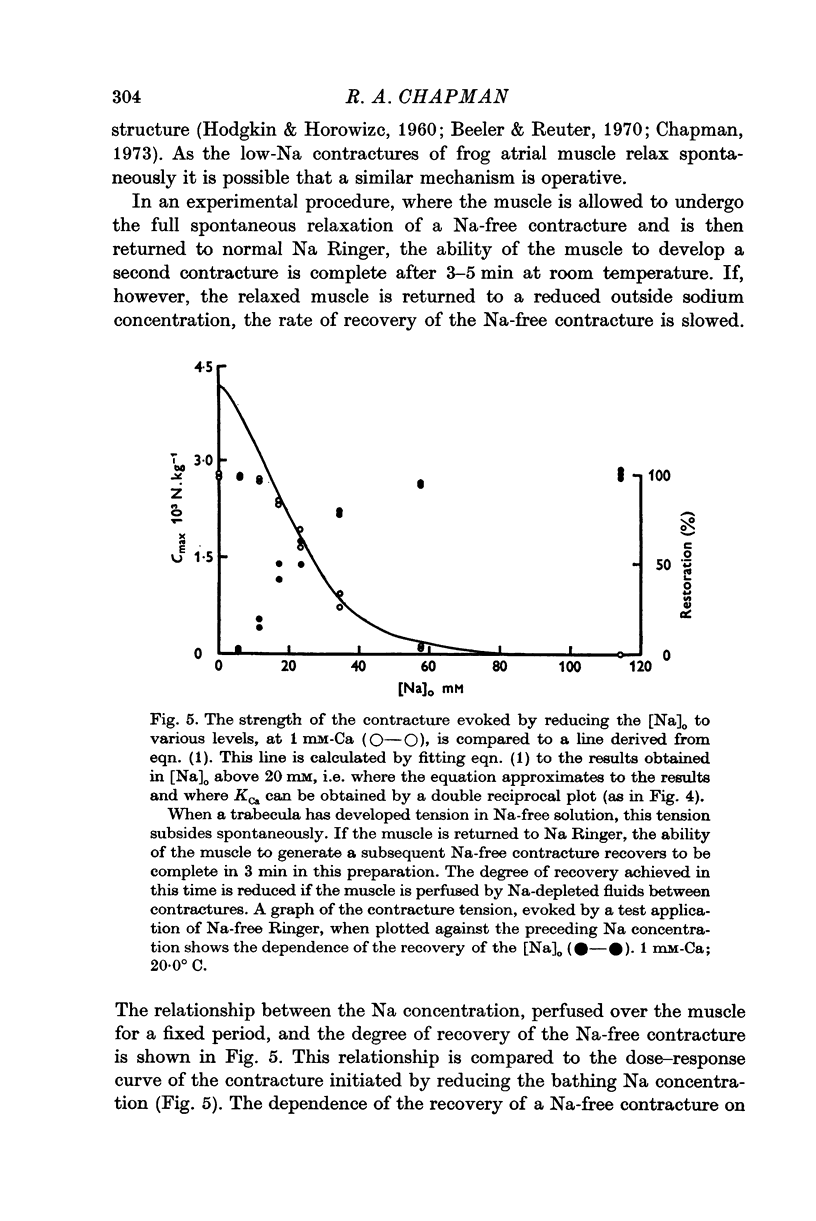
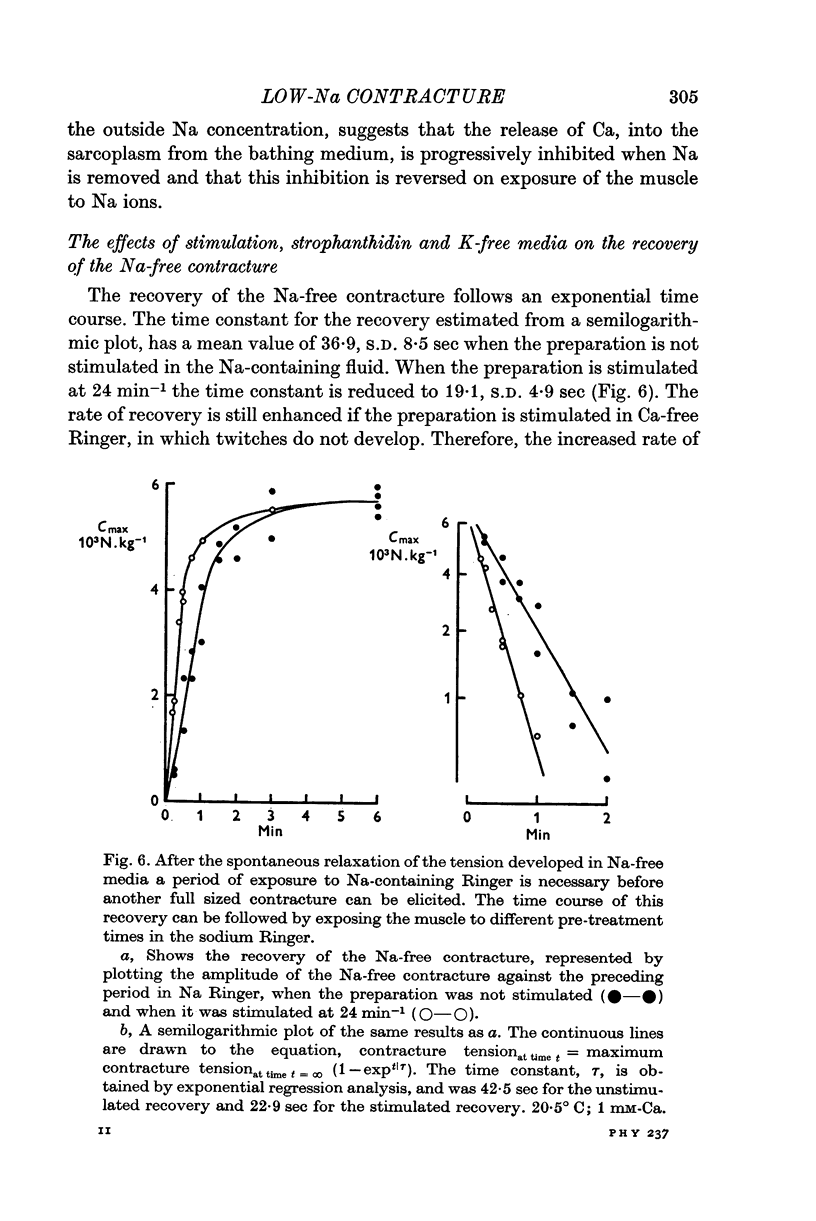
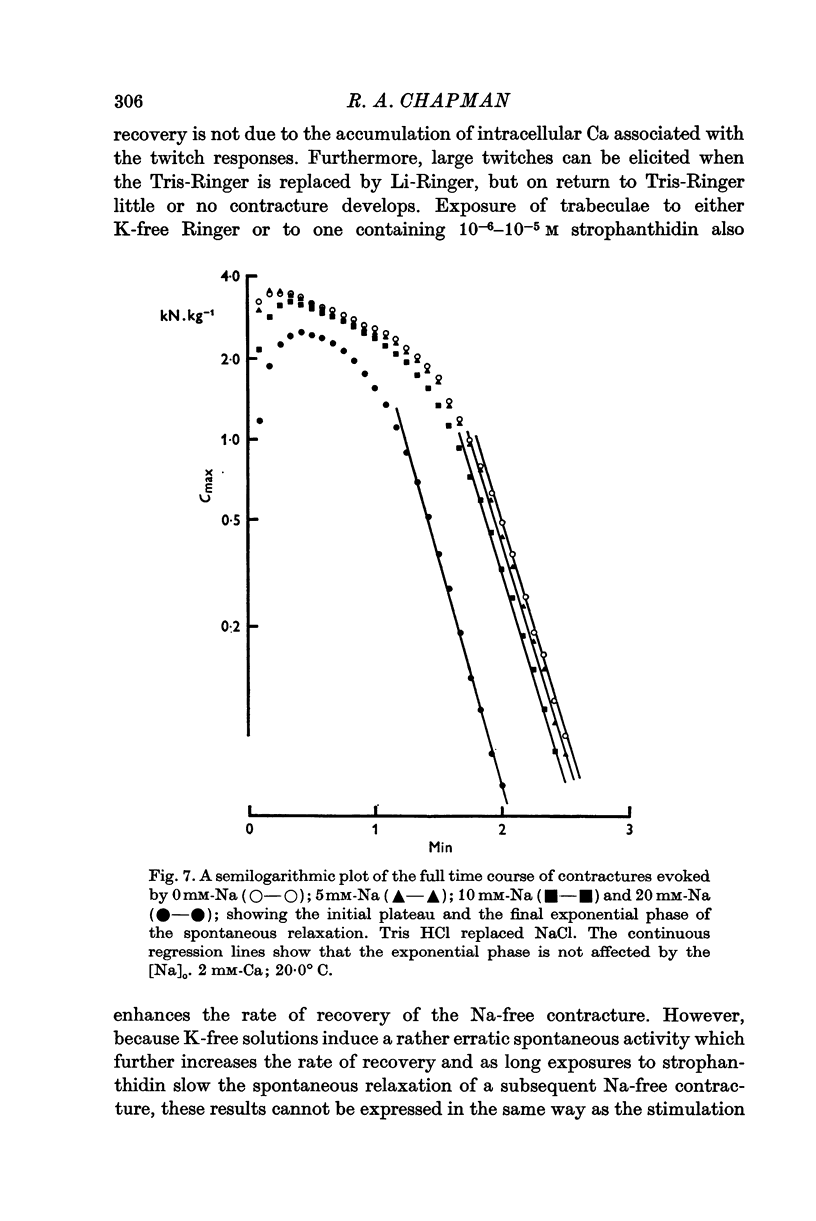
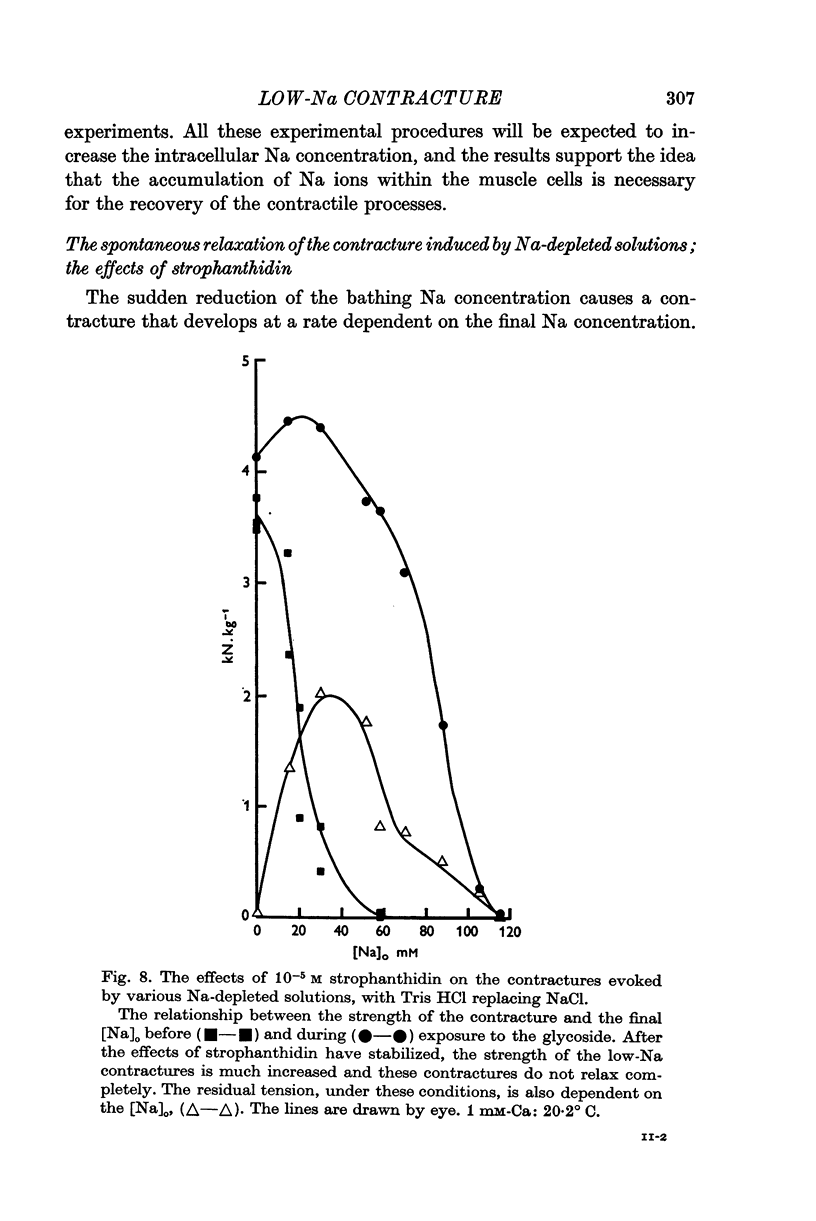
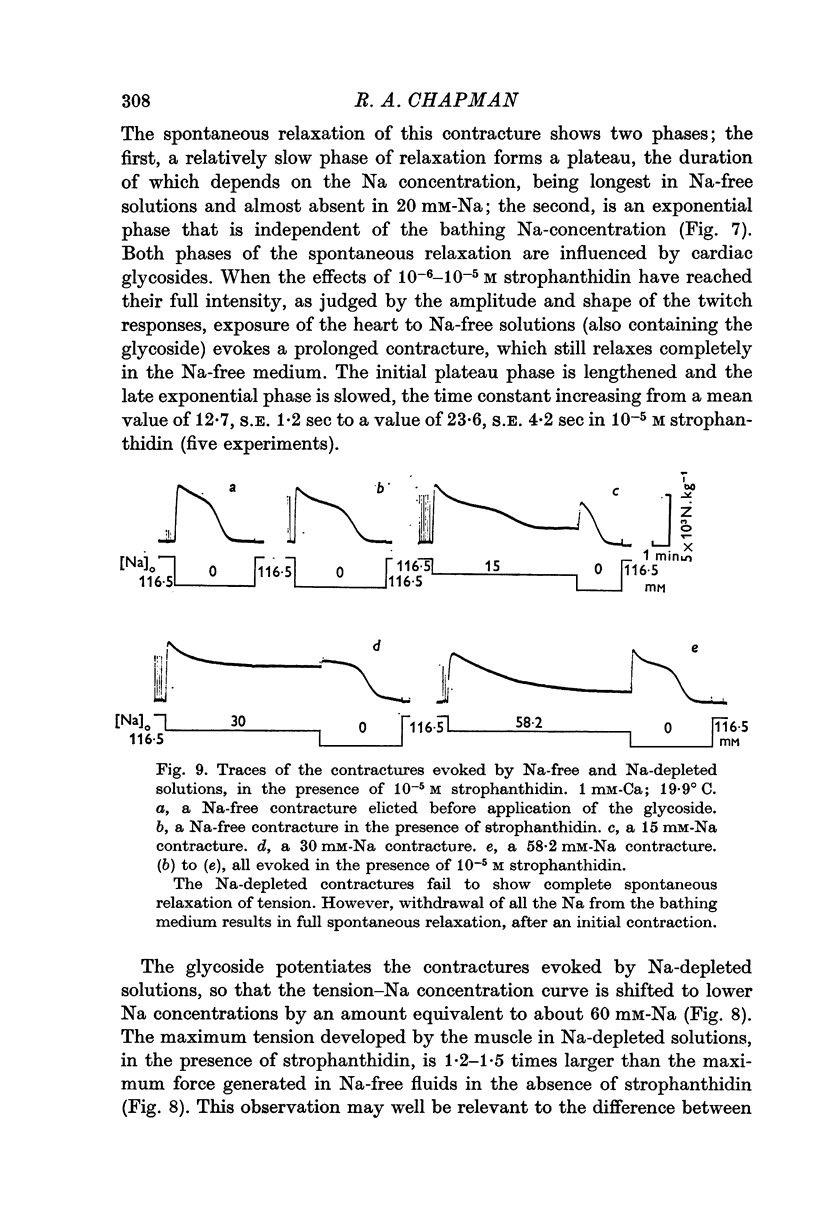
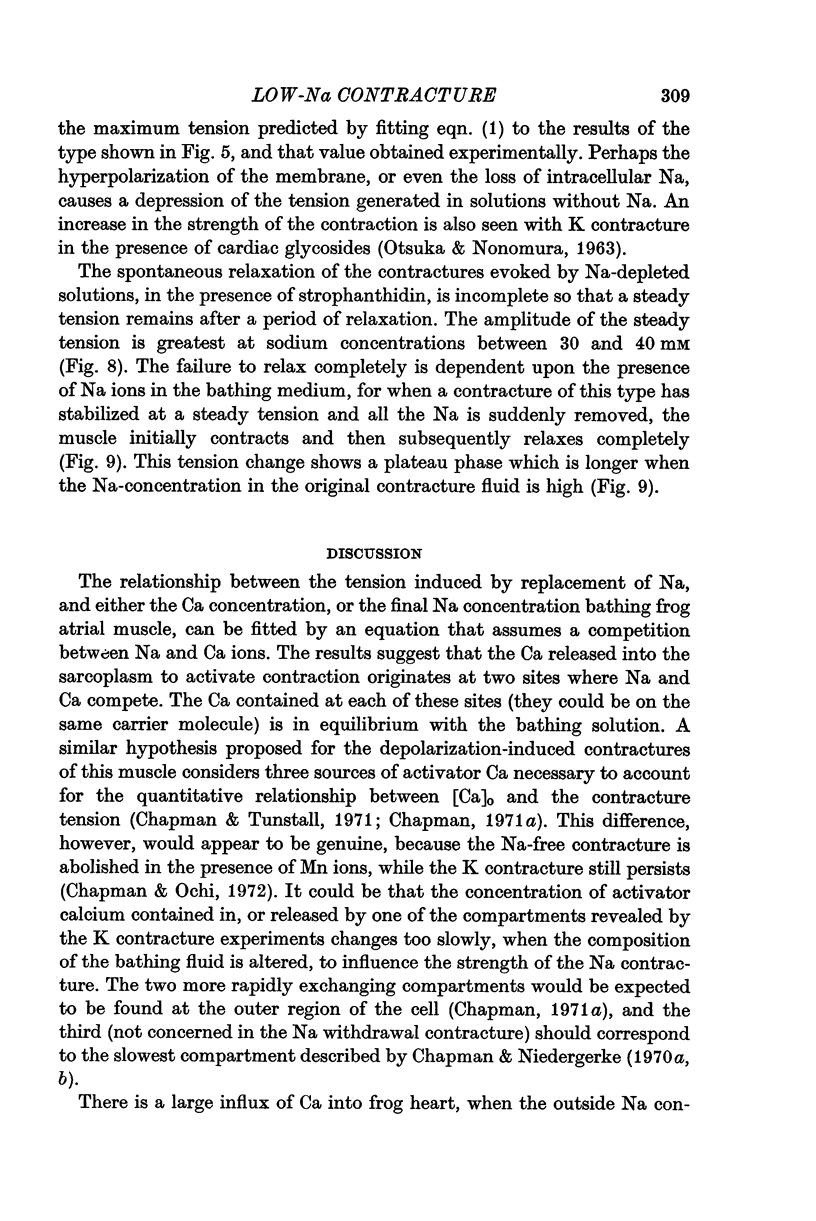
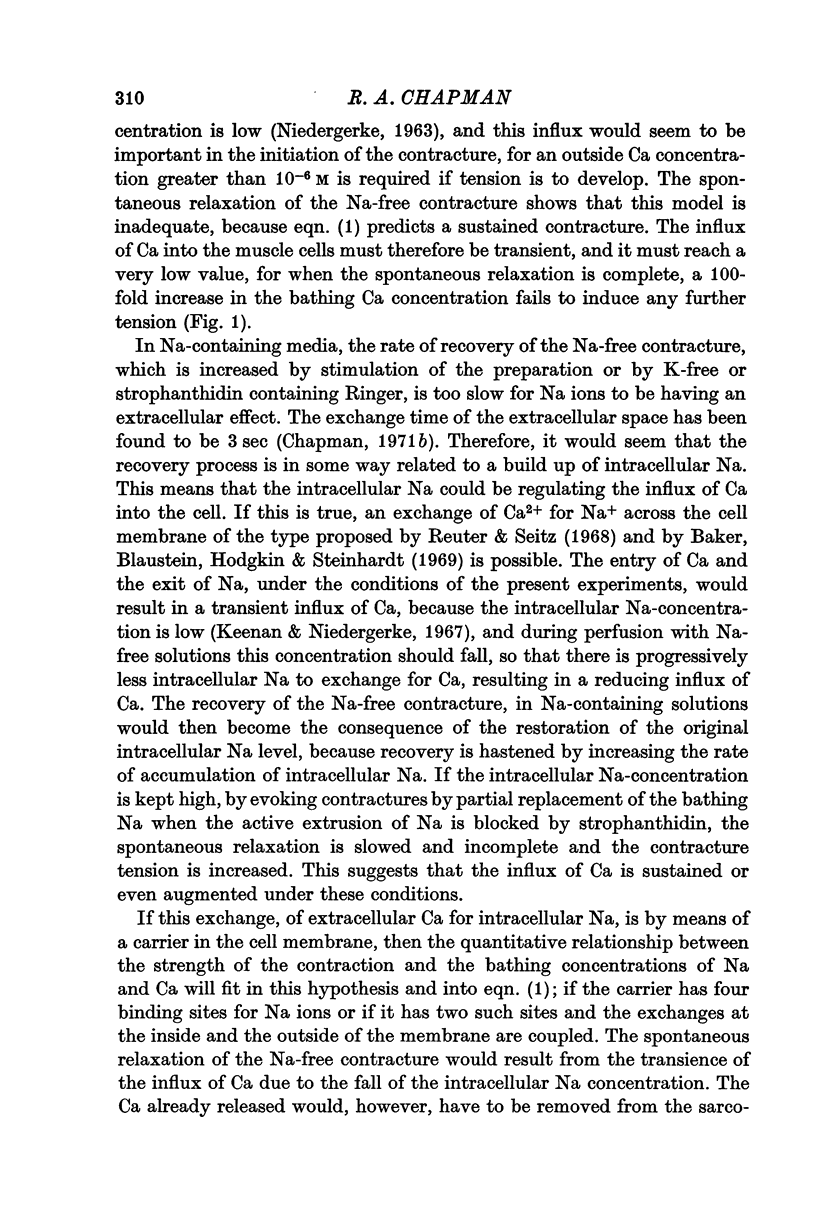
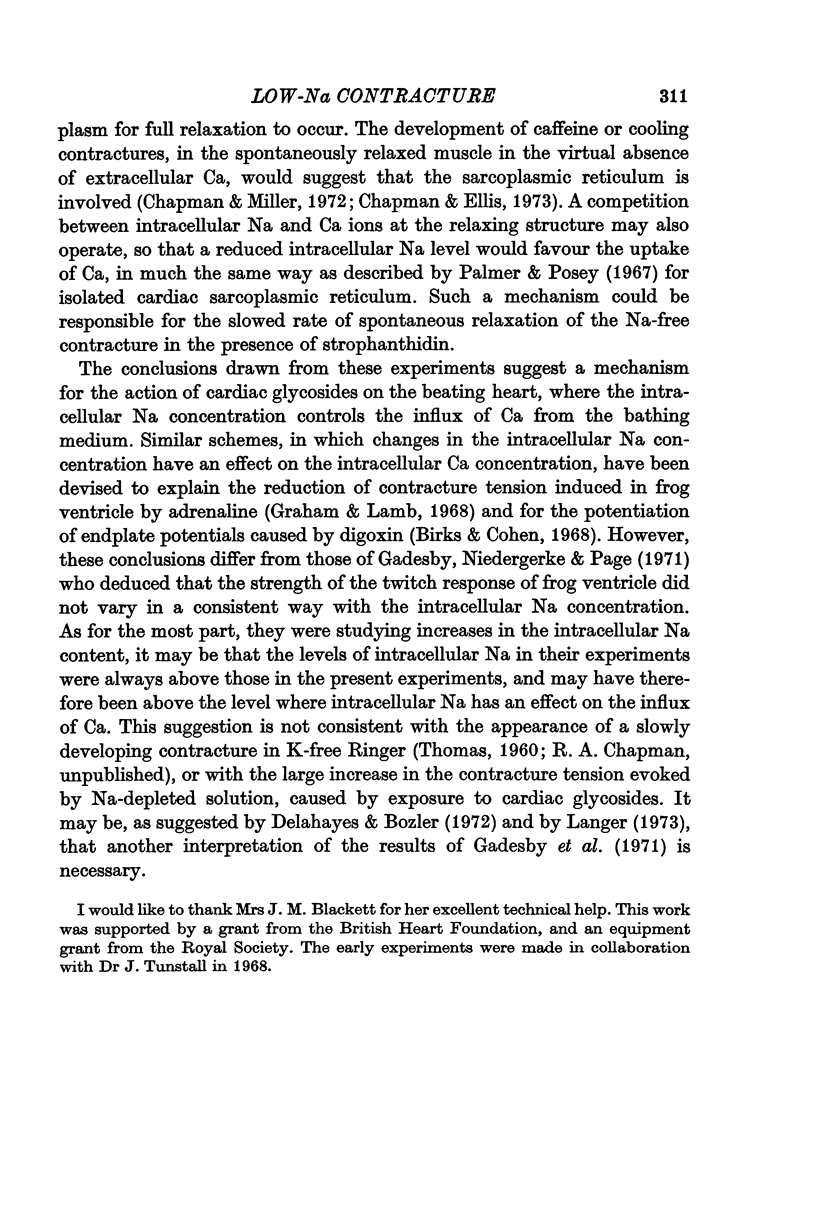
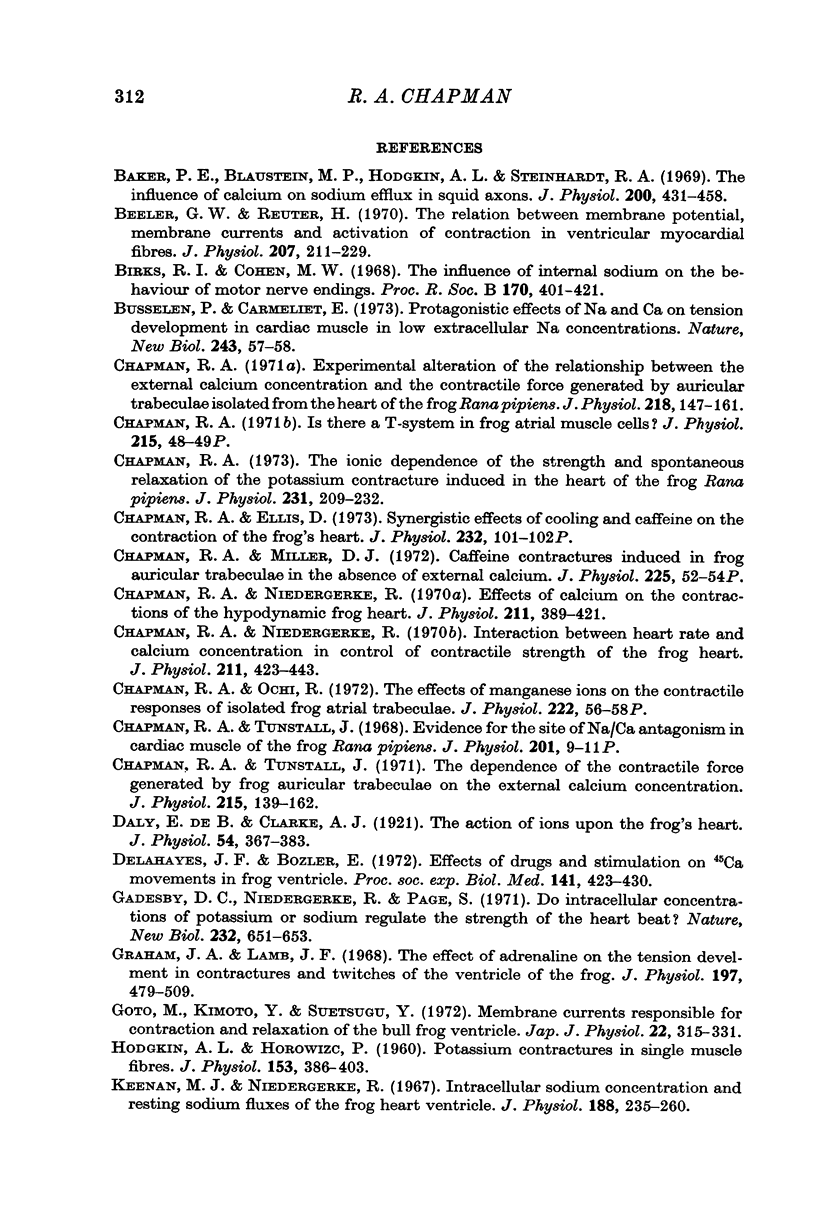
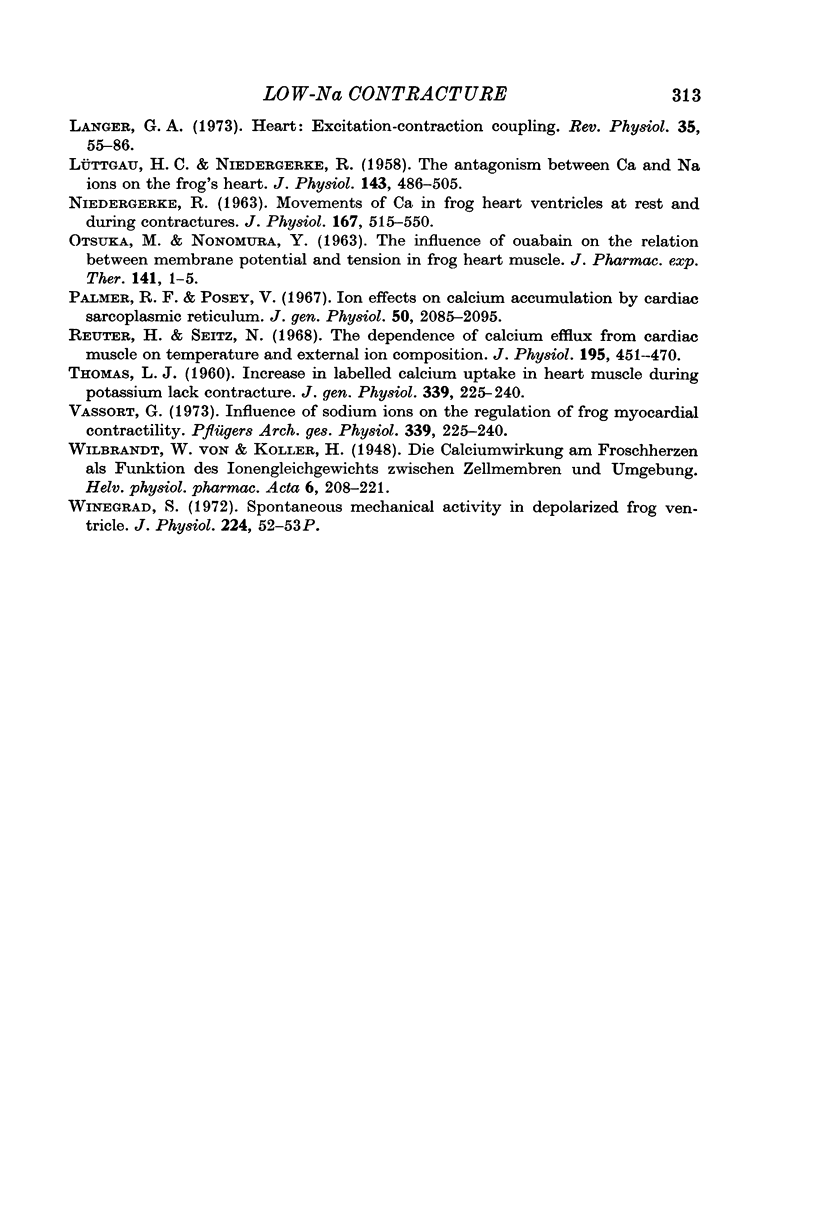
Selected References
These references are in PubMed. This may not be the complete list of references from this article.
- Baker P. F., Blaustein M. P., Hodgkin A. L., Steinhardt R. A. The influence of calcium on sodium efflux in squid axons. J Physiol. 1969 Feb;200(2):431–458. doi: 10.1113/jphysiol.1969.sp008702. [DOI] [PMC free article] [PubMed] [Google Scholar]
- Beeler G. W., Jr, Reuter H. The relation between membrane potential, membrane currents and activation of contraction in ventricular myocardial fibres. J Physiol. 1970 Mar;207(1):211–229. doi: 10.1113/jphysiol.1970.sp009057. [DOI] [PMC free article] [PubMed] [Google Scholar]
- Birks R. I., Cohen M. W. The influence of internal sodium on the behaviour of motor nerve endings. Proc R Soc Lond B Biol Sci. 1968 Jul 9;170(1021):401–421. doi: 10.1098/rspb.1968.0047. [DOI] [PubMed] [Google Scholar]
- Busselen P., Carmeliet E. Protagonistic effects of Na and Ca on tension development in cardiac muscle at low extracellular Na concentrations. Nat New Biol. 1973 May 9;243(123):57–59. [PubMed] [Google Scholar]
- Chapman R. A., Ellis D. Synergistic effects of cooling and caffeine on the contraction of the frog's heart. J Physiol. 1973 Jul;232(2):101P–102P. [PubMed] [Google Scholar]
- Chapman R. A. Experimental alteration of the relationship between the external calcium concentration and the contractile force generated by auricular trabeculae isolated from the heart of the frog, Rana pipiens. J Physiol. 1971 Oct;218(1):147–161. doi: 10.1113/jphysiol.1971.sp009608. [DOI] [PMC free article] [PubMed] [Google Scholar]
- Chapman R. A., Miller D. J. Caffeine contractures induced in frog auricular trabeculae in the absence of external calcium. J Physiol. 1972 Sep;225(2):52P–54P. [PubMed] [Google Scholar]
- Chapman R. A., Niedergerke R. Effects of calcium on the contraction of the hypodynamic frog heart. J Physiol. 1970 Dec;211(2):389–421. doi: 10.1113/jphysiol.1970.sp009284. [DOI] [PMC free article] [PubMed] [Google Scholar]
- Chapman R. A., Niedergerke R. Interaction between heart rate and calcium concentration in the control of contractile strength of the frog heart. J Physiol. 1970 Dec;211(2):423–443. doi: 10.1113/jphysiol.1970.sp009285. [DOI] [PMC free article] [PubMed] [Google Scholar]
- Chapman R. A., Ochi R. The effects of manganese ions on the contractile responses of isolated frog atrial trabeculae. J Physiol. 1972 Apr;222(1):56P–58P. [PubMed] [Google Scholar]
- Chapman R. A. The onic dependence of the strength and spontaneous relations of the potassium contracture induced in the heart of the frog Rana pipiens. J Physiol. 1973 Jun;231(2):209–232. doi: 10.1113/jphysiol.1973.sp010229. [DOI] [PMC free article] [PubMed] [Google Scholar]
- Chapman R. A., Tunstall J. The dependence of the contractile force generated by frog auricular trabeculae upon the external calcium concentration. J Physiol. 1971 May;215(1):139–162. doi: 10.1113/jphysiol.1971.sp009462. [DOI] [PMC free article] [PubMed] [Google Scholar]
- Daly I. de B., Clark A. J. The action of ions upon the frog's heart. J Physiol. 1921 Mar 15;54(5-6):367–383. doi: 10.1113/jphysiol.1921.sp001938. [DOI] [PMC free article] [PubMed] [Google Scholar]
- Delahayes J. F., Bozler E. Effects of drugs and stimulation on 45 Ca movements in frog ventricle. Proc Soc Exp Biol Med. 1972 Nov;141(2):423–430. doi: 10.3181/00379727-141-36790. [DOI] [PubMed] [Google Scholar]
- Gadsby D. C., Niedergerke R., Page S. Do intracellular concentrations of potassium or sodium regulate the strength of the heart beat? Nature. 1971 Aug 27;232(5313):651–653. doi: 10.1038/232651a0. [DOI] [PubMed] [Google Scholar]
- Goto M., Kimoto Y., Suetsugu Y. Membrane currents responsibile for contraction and relaxation of the bullfrog ventricle. Jpn J Physiol. 1972 Jun;22(3):315–331. doi: 10.2170/jjphysiol.22.315. [DOI] [PubMed] [Google Scholar]
- Graham J. A., Lamb J. F. The effect of adrenaline on the tension developed in contractures and twitches of the ventricle of the frog. J Physiol. 1968 Jul;197(2):479–509. doi: 10.1113/jphysiol.1968.sp008571. [DOI] [PMC free article] [PubMed] [Google Scholar]
- HODGKIN A. L., HOROWICZ P. Potassium contractures in single muscle fibres. J Physiol. 1960 Sep;153:386–403. doi: 10.1113/jphysiol.1960.sp006541. [DOI] [PMC free article] [PubMed] [Google Scholar]
- Keenan M. J., Niedergerke R. Intracellular sodium concentration and resting sodium fluxes of the frog heart ventricle. J Physiol. 1967 Jan;188(2):235–260. doi: 10.1113/jphysiol.1967.sp008136. [DOI] [PMC free article] [PubMed] [Google Scholar]
- LUTTGAU H. C., NIEDERGERKE R. The antagonism between Ca and Na ions on the frog's heart. J Physiol. 1958 Oct 31;143(3):486–505. doi: 10.1113/jphysiol.1958.sp006073. [DOI] [PMC free article] [PubMed] [Google Scholar]
- Langer G. A. Heart: excitation-contraction coupling. Annu Rev Physiol. 1973;35:55–86. doi: 10.1146/annurev.ph.35.030173.000415. [DOI] [PubMed] [Google Scholar]
- NIEDERGERKE R. MOVEMENTS OF CA IN FROG HEART VENTRICLES AT REST AND DURING CONTRACTURES. J Physiol. 1963 Jul;167:515–550. doi: 10.1113/jphysiol.1963.sp007166. [DOI] [PMC free article] [PubMed] [Google Scholar]
- OTSUKA M., NONOMURA Y. The influence of ouabain on the relation between membrane potential and tension in frog heart muscle. J Pharmacol Exp Ther. 1963 Jul;141:1–5. [PubMed] [Google Scholar]
- Palmer R. F., Posey V. A. Ion effects on calcium accumulation by cardiac sarcoplasmic reticulum. J Gen Physiol. 1967 Sep;50(8):2085–2095. doi: 10.1085/jgp.50.8.2085. [DOI] [PMC free article] [PubMed] [Google Scholar]
- Reuter H., Seitz N. The dependence of calcium efflux from cardiac muscle on temperature and external ion composition. J Physiol. 1968 Mar;195(2):451–470. doi: 10.1113/jphysiol.1968.sp008467. [DOI] [PMC free article] [PubMed] [Google Scholar]
- Vassort G. Influence of sodium ions on the regulation of frog myocardial contractility. Pflugers Arch. 1973 Mar 30;339(3):224–240. doi: 10.1007/BF00587374. [DOI] [PubMed] [Google Scholar]
- WILBRANDT W., KOLLER H. Die Calciumwirkung am Froschherzen als Funktion des Ionengleichgewichts zwischen Zellmembran und Umgebung. Helv Physiol Pharmacol Acta. 1948;6(2):208–221. [PubMed] [Google Scholar]


